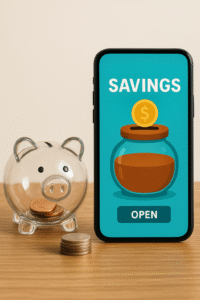Nail Your Product Pricing Strategy From Day One

Getting your pricing right can make or break your business. Many student entrepreneurs either charge too little because they’re unsure, or too much and scare off customers. The key is having a clear, tested product pricing strategy that fits your market and keeps your business sustainable.
This guide gives you the tools to set the right prices, without guessing.
Why Your Product Pricing Strategy Matters
A solid product pricing strategy helps you cover your costs, make a profit, and stay competitive. It also shows customers how valuable your product or service is. If your prices feel random, people won’t take your brand seriously. But when pricing makes sense and reflects quality, you’ll build trust and grow sales.
Know Your Costs
Before you set any price, you need to understand your costs. That includes:
- Direct costs: Raw materials, packaging, tools
- Indirect costs: Internet bills, delivery fees, electricity
- Time costs: How many hours do you spend per product or service
Once you know what it costs to create or offer something, you can avoid underpricing and losing money.
Add a Reasonable Margin
Let’s say it costs ₦2,000 to produce one item. If you sell it for ₦2,500, you’re only making ₦500, and that’s before other costs hit. That’s why a smart product pricing strategy includes a margin that covers costs and keeps your business running.
Depending on the market, some entrepreneurs aim for a 30–50% profit margin. The more value you offer, the more you can charge.
Study the Market
Check what others in your niche are charging. Look at students selling similar products or services, not just big brands. Ask:
- Are you offering something better or different?
- Can your brand justify a higher price?
- Would offering bundles or discounts make sense?
Your product pricing strategy should reflect your value and what your customers can afford.
Keep It Simple and Clear
Your pricing should be easy to understand. Confusing prices turn people away. Use whole numbers where possible, and avoid hidden charges.
For services, consider creating clear packages. For example:
“₦5,000 for 5 hours of tutoring + free notes”
“₦3,500 for 3 edited videos + 2-day delivery”
Simple pricing builds trust.
Don’t Be Afraid to Adjust
Pricing is not one-and-done. Review your product pricing strategy every few months. If your costs increase or demand grows, you may need to raise prices. If something isn’t selling, test a lower price or repackage it.
Even big companies tweak prices all the time. So can you.









